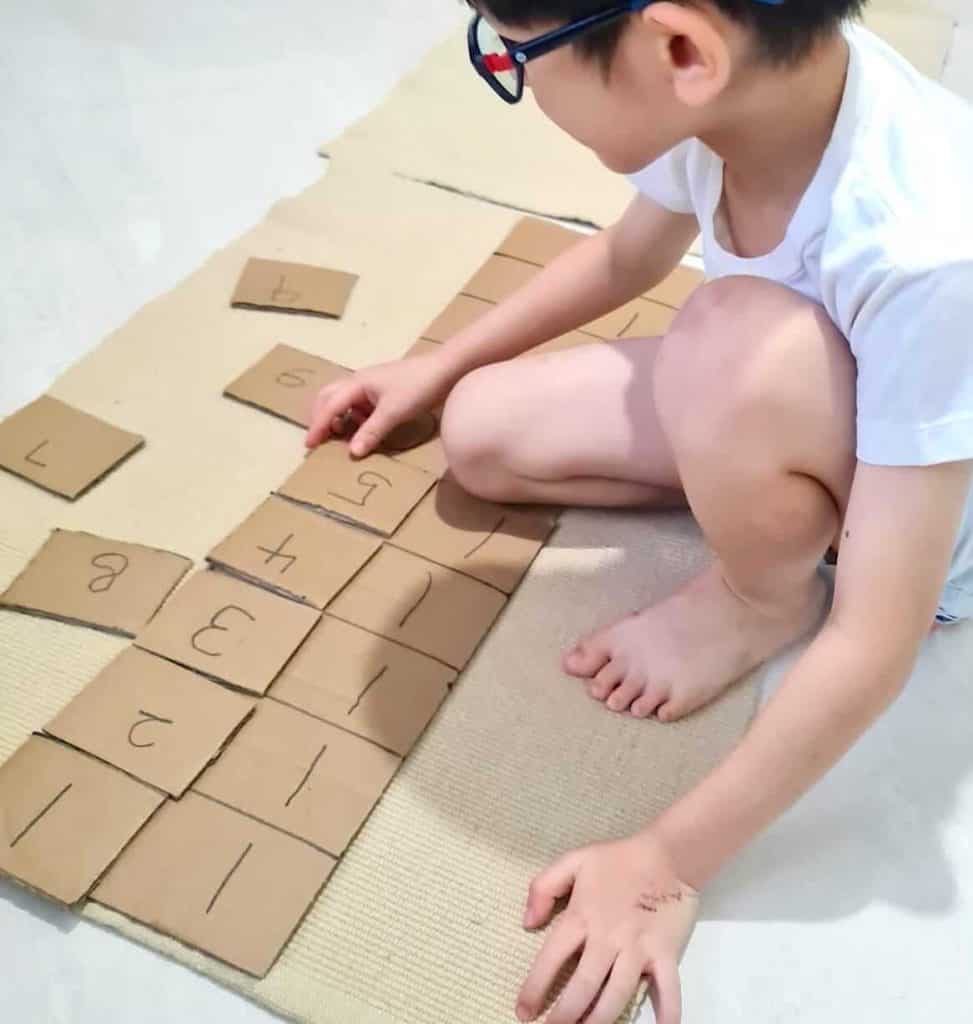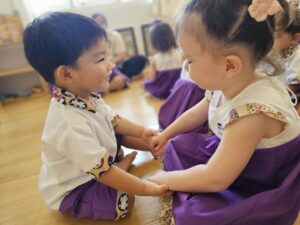Dr. Maria Montessori said that children were born with a ‘mathematical mind’, a core foundation of human intelligence. She defined it as a natural tendency for precision, orientation, and order, usually demonstrated in older children as the capacity for logical, systematic thinking.
The mathematical mind is what makes Montessori’s method of teaching mathematics uniquely effective. Instead of expecting children to only memorise sequences or processes, we teach children to understand and appreciate the logic and beauty of mathematics through hands-on materials and exploration at their own pace. They learn numeration, geometry, arithmetic, and even algebra with a firmer foundational understanding of the concepts than if they had just memorised facts.
Counting and understanding numbers can be difficult for young children. In a Montessori environment, a child not only sees the symbol for 1, 1000, or ½, they can also hold each of the corresponding quantities in their hand with concrete materials. Later, by combining this equipment, separating it, sharing it, counting it, and comparing it, they can demonstrate the basic operations of arithmetic.
To learn the “teen” numbers, the child uses a material known as the Seguin or “Tens” Boards. Seguin Boards can easily be made at home using reusable materials and are very suitable for children familiar with place values (units, tens, hundreds and thousands).
They are simple enough for children to make themselves, and is a good craft exercise to get your child excited to begin to work on this activity at home. Not only does the child see how tens and ones are being added to make larger numerals, but they are also physically building tens themselves!

You will need:
· 1 long piece of cardboard
· 10 smaller pieces
Note: you can use cardstock, or practise your sustainability and repurpose a cardboard box as we have
· Ruler
· Marker pens
· Scissors


Making the Seguin board
Long Piece
Draw 10 rows with thick dark lines using the ruler and marker pen
Write ‘10’ in each row
Smaller Pieces
Write 1 – 9 in each square


In this Seguin Board activity, children will be introduced to the traditional number names by forming quantities with the concrete materials first, and then associating each quantity with their written symbols. This helps them to learn that the teen numbers, 11 to 19, are made up of a ten and a number of units. The child discovers how to write these numbers, and also develops an understanding of how the base of how many tens and units make a number.
The Seguin Boards have the number 10 printed nine times in a row. On separate cards are the numbers 1 through 9. The child forms the number eleven by sliding the number 1 over the zero in the first ten. This shows them concretely that the number eleven is made up of 10 plus 1. Then they form twelve by sliding the number 2 over the zero in the second ten, showing that twelve is made up of ten plus two, and so on.
· Use the single digits to order the numbers from 1 – 9.
· Use the ‘10s’ board and single digits to make 11 – 19.
Once your child is familiar with these numbers, use the same material to make 11 – 99.
When working through this Seguin Board activity at home with your child, there are many different variations that you can do together. Reinforce the lesson with counting games when your child needs to count objects, such as cars on the road, birds in the park or people in the MRT or play a game where you both clap your hands ‘15 times’ or hop ‘18 times’.
Learning with concrete materials helps children to develop an innate understanding of mathematics. As they master complexity in a natural progression, they are able to comfortably begin to perform operations such as addition, subtraction, multiplication and division, much needed skills as they develop through life.
Reference materials:
HotH Blog: 5 Reasons Why We Love Montessori Maths
HotH Blog: Making Sense of Mathematics
HotH Blog: How Does Montessori Prepare Your Child for Primary 1 Mathematics
Research Parent: Montessori Paper Seguin Boards








